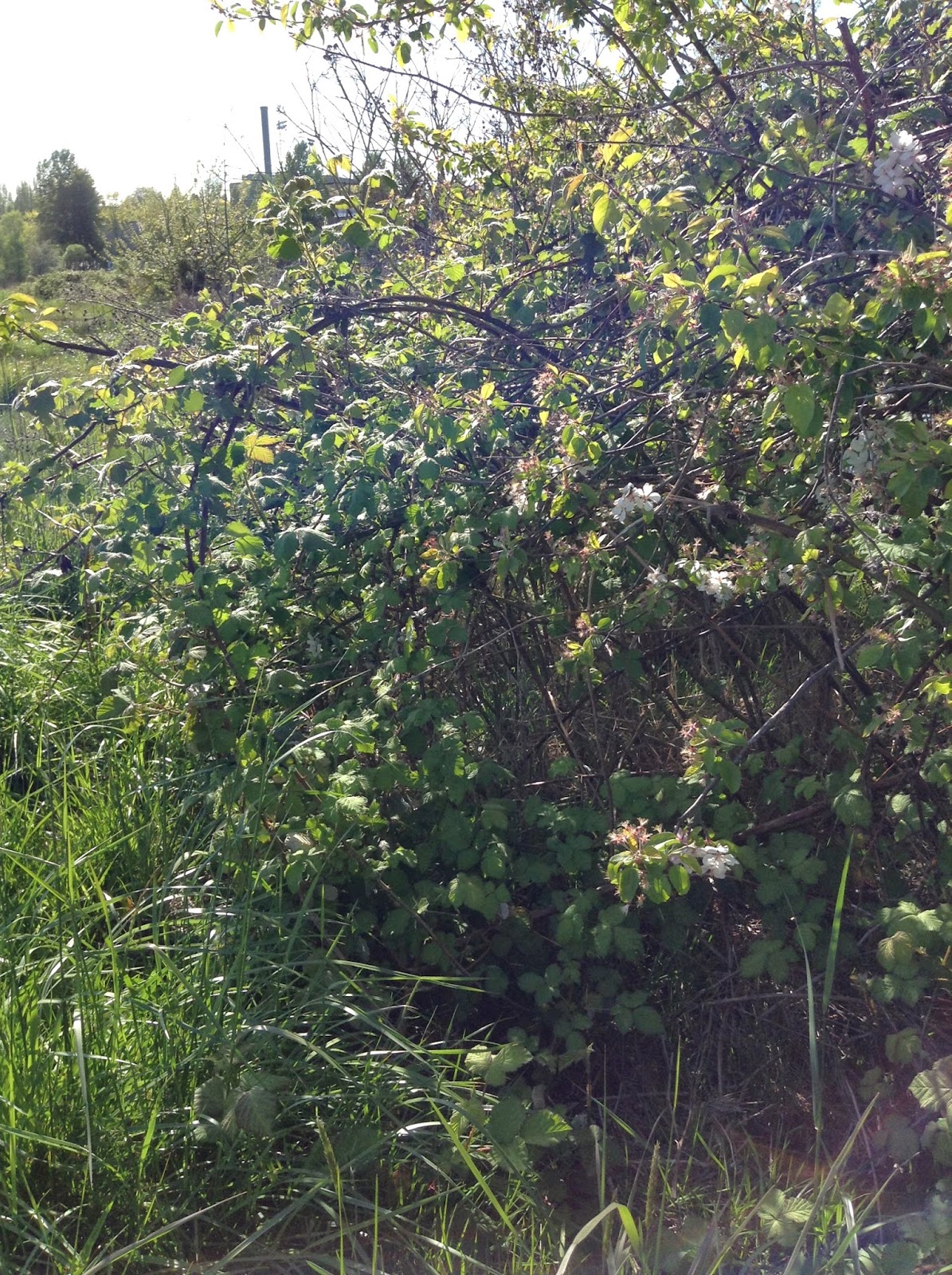1) Apple tree, malus domestica
 This is a true apple tree. It can be distinguished by:
This is a true apple tree. It can be distinguished by:- white/pink blossoms with 5 petals that bloom around April (about 2 inches across)
- thick-ish, smooth bark
- alternating branches
- the absence of pointy branches, which crab apple trees have
- serrated leaves
This one was growing near the water, sort of entwined with a nearby blackberry bush. Various small brown birds came and perched on its branches, although I couldn't identify the birds.
2) Broad-leaved Cattail, typha latifolia
- their tall stalks (about 6 feet)
- at the tip of the stalk is a brown clump that is soft and fuzzy (female part)
- when the new ones are growing in you can see the male part more clearly; it is located above the female part and is a lighter brown and dense
- location near water and marshes.
These grow near the water and marshes at my site. I saw some birds (thrushes perhaps) hopping through the dead stalks, maybe looking for food. Some birds flew through them, and others like the red-winged blackbird will sometimes perch vertically on the stalks.
3) Himalayan blackberry, rubus discolor (procerus)
- sharp small thorns on its branches
- arching, separate branches that trail along by themselves
- serrated, compound leaves with five leaflets; have a red tint; veins go outward
- branches also are red-ish brown
This was growing near the water, intertwined with the apple tree. Its flowers have not bloomed yet and the berries have not appeared yet either.
4) Oregon ash, fraxinus latifolia
This is an Oregon ash; it can be identified through its:
- distinctively opposite branches
- few buds/leaves on the branches; the ones that are there are located on the tips or "crosshatches" of branches
- opposite leaves that are pinnately compound
- in marsh, near water
This one has grown larger buds since my first observation of the site. It also seems to host a few red-winged blackbirds, and I wonder if it is always the same bird that returns to the tree. This tree also had some small white spots on its trunk, but I am not sure if this is characteristic of the species as a whole.
5) Red osier dogwood, cornus stolonifera (sericea)
This is a photograph of red osier dogwood, which can be distinguished by:
-its red branches
- its height (shrub-sized, about 10 feet)
- leaf veins that swoop up toward the tip rather than extend out to the edges of the leaf
- thicker leaves, almost look like they were molded
- small cluster of flowers in a "head" shape (these have not bloomed yet but will in May-July)
- near swamp/wetland
6) Reed canary grass, phalaris arundinacea
In the foreground, we can see the details of reed canary grass. It has the following qualities:
- round stems with flat blades (leaves); the leaves curve inward slightly
- around 4 feet tall
- panicles at the tops
- grow in bunches
- sticky leaves
This grass is everywhere at UBNA!
7) Scotch broom, cytisus scoparius
These are photographs of scotch broom. The shrub itself is about 8 feet tall and has the following features:
- bright yellow flowers that droop downwards (about 3/4 of an inch long)
- black pods near the flowers
- broom-like projections of branches going upward; opposite branches
- small leaves that are divided into 3 leaflets; look like rosemary leaves
This shrub was further away from the water.
8) Yellow flag iris, iris pseudacorus
This is a photo of yellow flag iris in the water. It looks like a thick, tall blade of grass and grows in clumps of up to about 18 inches in height. These ones at UBNA have not bloomed yet, but when they do they will grow yellow irises. The leaves have straight veins that travel up toward the tip. On the backside of the leaf, there is a little raised ridge in the middle.












No comments:
Post a Comment